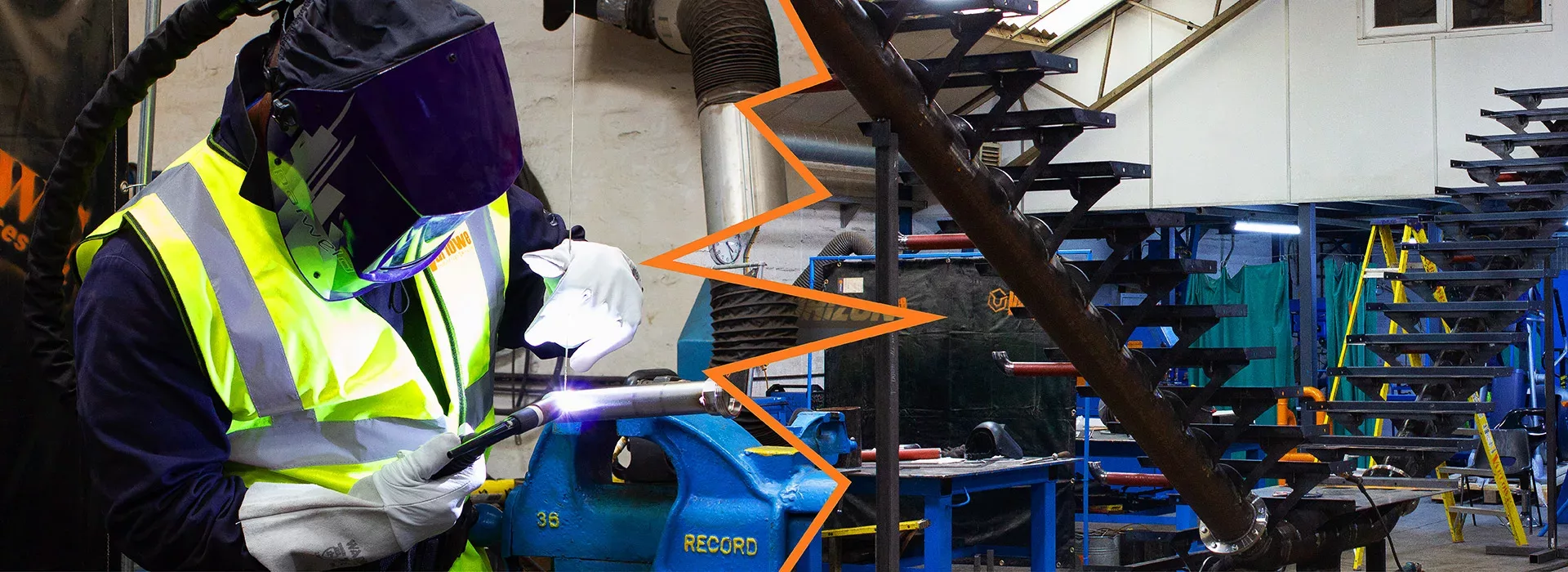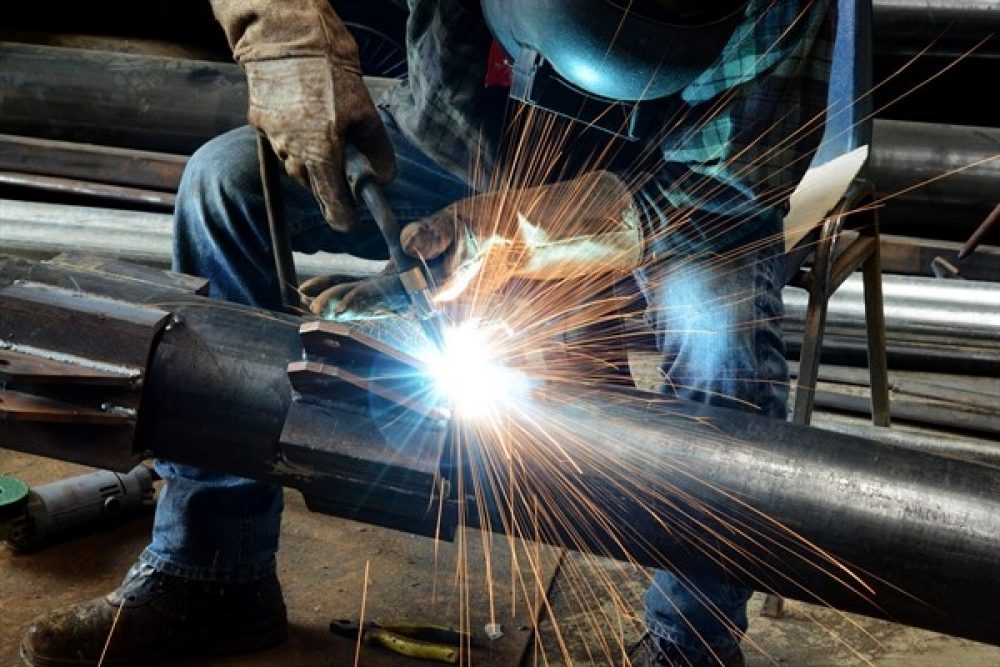Usual Welding Repair Service Issues and Just How to Address Them Efficiently
Welding fixings typically run into a series of concerns that can threaten the stability of the end product. Common issues include inadequate infiltration, porosity, and imbalance, amongst others. Each problem provides special difficulties that require specific methods for resolution. Comprehending these problems is essential for welders intending to enhance their outcomes and skills. This discussion will check out these usual welding fixing concerns and efficient methods to resolve them.
Insufficient Penetration
Poor infiltration occurs when the weld steel fails to totally fuse with the base material, causing weak joints and potential architectural failings. This problem commonly stems from not enough heat input, wrong electrode angle, or improper welding speed. Welders may experience poor infiltration because of a miscalculation of the necessary specifications for a particular product thickness or kind. Furthermore, contamination on the base material's surface area can impede efficient bonding, exacerbating the problem. To attend to insufficient penetration, welders need to ensure proper settings on their equipment and maintain a clean work surface area. Normal assessment of welds is suggested to determine any type of deficiencies early, allowing for prompt adjustments and the avoidance of compromised architectural honesty in welded settings up.
Porosity
Porosity is an usual issue in bonded joints that materializes as tiny gas bubbles caught within the weld metal. This problem can jeopardize the stability of the weld, causing reduced toughness and prospective failing under stress. Belgrade Fabrication. Porosity usually develops from contamination, moisture, or improper welding strategies, which enable gases to get away right into the molten weld pool. To attend to porosity, welders need to assure proper surface prep work, keep a clean working atmosphere, and use ideal welding criteria. In addition, picking the best filler product and securing gas can reduce gas entrapment. Regular evaluation and screening of welds can aid determine porosity early, guaranteeing prompt rehabilitative activities are taken, consequently protecting the quality and reliability of the welded structure
Imbalance
Imbalance in welding can develop from numerous elements, consisting of inappropriate arrangement and thermal development. Understanding the origin is crucial for effective resolution. Numerous modification strategies are offered to realign components and guarantee structural stability.
Causes of Imbalance
Welding imbalance frequently comes from a selection of underlying problems that can endanger architectural stability. One primary reason is improper fit-up of elements prior to welding, which can lead to voids and irregular surface areas. Variations in thermal growth during the welding process can likewise cause distortion, specifically if the products being joined have different coefficients of expansion. Furthermore, poor securing and fixturing might fall short to hold elements firmly in location, causing activity during welding. Inadequately maintained equipment, consisting of welding equipments and tools, may present variances in the weld grain, more adding to imbalance. Lastly, driver mistake, stemming from not enough training or experience, can also play a substantial duty in producing misaligned welds.
Improvement Strategies Offered
Addressing imbalance effectively calls for a mix of corrective strategies tailored to the details problems handy. One typical method is using jigs or components to hold components in the appropriate setting during welding, guaranteeing regular positioning. Furthermore, preheating the products can help reduce distortion and improve fit-up. For substantial imbalance, mechanical realignment methods, such as making use of hydraulic jacks or clamps, can be utilized to correct the setting prior to welding. Post-weld warm treatment may additionally be essential to ease tensions triggered by imbalance. Careful evaluation and change throughout the setup stage can protect against misalignment problems from becoming considerable problems, promoting a smoother welding procedure and boosting total architectural honesty.
Distortion
Distortion is an usual challenge in welding that can arise from different aspects, including uneven cooling and heating. Recognizing the reasons of distortion is important for applying efficient avoidance strategies. Resolving this problem not just enhances structural stability but additionally boosts the overall quality of the weld.
Sources of Distortion
When subjected to the extreme warmth of welding, products usually go through adjustments that can result in distortion. This sensation largely arises from thermal development and contraction throughout the welding process. As the weld location warms up, the material increases; upon cooling, it gets, which can develop inner anxieties. Additionally, irregular home heating throughout a workpiece can exacerbate these stress and anxieties, leading to warping or bending. The kind of material additionally plays a considerable function; metals with differing thermal conductivity and coefficients of growth may react in a different way, resulting in unforeseeable distortions. Furthermore, inadequate joint style and poor fixturing can contribute to imbalance throughout welding, enhancing the chance of distortion. Recognizing these reasons is necessary for effective welding repair work and avoidance approaches.
Avoidance Techniques
Efficient prevention strategies for distortion during welding concentrate on controlling warmth input and making certain proper joint style. Maintaining a regular warmth input assists to minimize thermal growth and contraction, which can bring about distortion. Making use of techniques such as preheating the workpiece can also decrease the temperature gradient, advertising consistent home heating. In addition, selecting proper joint designs, such as T-joints browse around this site or lap joints, can enhance security and reduce tension focus. Carrying out proper fixturing to safeguard the work surfaces in position further aids in preserving placement during the welding procedure. Staggered welding sequences can disperse heat much more evenly, protecting against local distortion. By using these methods, welders can considerably reduce the possibility of distortion and enhance the overall high quality of their welds.
Cracking
Breaking is a common problem experienced in welding repair work, typically resulting from different variables such as incorrect cooling prices, product selection, or insufficient joint preparation. The event of splits can significantly endanger the stability of the weld, bring about possible failures throughout procedure. To address this concern, welders must initially examine the origin causes, making certain that materials are compatible and appropriately chosen for the details application. In addition, regulating the cooling rate during the welding procedure is important; quick cooling can cause stress and lead to splitting. Correct joint style and preparation also contribute to minimizing the threat. Executing these approaches can boost weld top quality and sturdiness, inevitably reducing the probability of splitting in ended up weldments.

Insufficient Blend
A substantial concern in welding fixings is incomplete fusion, which takes place when the weld steel does not sufficiently bond with the base product or previous weld passes - Montana Mobile Welding and Repair Belgrade Fabrication. This defect can result in weak points in the joint, potentially compromising the integrity of the bonded structure. Aspects adding to insufficient combination consist of not enough heat input, improper welding technique, and contamination of the surface areas being joined. To address this issue properly, welders ought to assure proper pre-weld cleansing and surface area prep work, as well as change their welding parameters to attain ample infiltration and combination. Regular assessment during the welding process can likewise assist determine incomplete combination early, enabling timely rehabilitative steps to enhance the overall quality of the weld
Overheating
While welding fixings can boost architectural honesty, overheating provides read this a considerable difficulty that can result in material degradation. Too much warmth throughout welding can alter the mechanical properties of metals, leading to decreased stamina, boosted brittleness, and warping. This phenomenon is especially essential in high-stress applications where architectural integrity is vital. Recognizing overheating can include aesthetic assessments for discoloration or distortion, along with keeping track of temperature level during the welding process. To alleviate the threats related to getting too hot, welders must employ proper techniques, such as controlling warmth input, changing travel rate, and using ideal filler products. Furthermore, applying pre- and post-weld warmth therapies can assist bring back product buildings and improve the overall quality of the fixing, making sure long-lasting performance and safety.
Often Asked Inquiries
What Are the Common Indicators of a Welding Defect?

How Can I Test My Welds for Quality?
To evaluate welds for quality, one can utilize visual inspections, ultrasonic screening, and radiographic methods. Each technique ensures structural integrity, identifies problems, and validates adherence to specified criteria, eventually improving the dependability of the welded joints.
What Security Precautions Should I Take While Welding?
When welding, one must prioritize security by wearing appropriate personal safety tools, ensuring appropriate air flow, protecting flammable products away, preserving a clean work space, and understanding environments to stop mishaps and injuries.
Can I Fix a Weld Without Redesigning the Entire Joint?
Repairing a weld without redoing the whole joint is possible, relying on the damage (Belgrade Fabrication). Techniques such as grinding, adding filler product, or utilizing a welding process can efficiently attend to details imperfections while preserving the bordering framework
What Equipment Are Vital for Efficient Welding Repairs?
Crucial tools for reliable welding repair work consist of a welding device, wire brush, mill, protective gear, clamps, and filler products. Each tool plays an essential role in guaranteeing high quality and safety during the repair process. Porosity typically emerges from contamination, wetness, or inappropriate welding techniques, which enable gases to escape into the liquified weld swimming pool. Inadequately kept tools, including welding machines and devices, may introduce incongruities in the weld bead, additional adding to misalignment. When subjected to the intense warm of site here welding, products typically undergo modifications that can lead to distortion. Fracturing is a common issue run into in welding repairs, typically resulting from numerous variables such as inappropriate air conditioning prices, product selection, or insufficient joint preparation. A significant issue in welding repair work is insufficient combination, which happens when the weld steel does not sufficiently bond with the base material or previous weld passes.